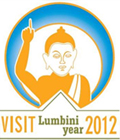Ganesh Himal Strenuous Kalo and Seto Kunda Camping Trekking
Day 1 Kathmandu to Shyabru Besi 1503 m /4945 Ft. 8-9 hrs drive
Taking local bus early in the morning or a private four wheel drive journey from Kathmandu reaches Shyabru Besi, gateway to the Langtang Valley at the confluence of the Bhote Kosi and Langtang Rivers. Mesmerizing scenic driving and passing through Trisuli Bazaar, Ramche Gaon and Dhunche Bazaar makes you scenic driving. Narrow and bit adventurous zig zags road but amazing landscape along the way driving will make you good start day drive of the trek.
Day 2 Shyabru Besi to Chawatar (lunch) to Gatlang 1 hour drive, 2337 m/7690Ft. 5- 6 hrs hike
A dirt track zig-zags to the west up to Bahun Danda Pass and then down to the Tamang settlement of Gatlang, a cornerstone village on the Tamang Heritage Trail or hike to Gatlang by way of Chawatar. Gatlang is a Tamang village with unique customs and craftsmanship in a magnificent setting.
Above lies Parvati Kund, popular during Janai Purnimaa when thousands of pilgrims are attracted to the sacred pond and nearby temple.
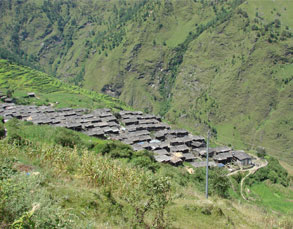 Day 3 Gatlang to Parvati Kunda ,Yuri Kharka (lunch) to Somdang 3271m/10760Ft. 6-7 hrs
Day 3 Gatlang to Parvati Kunda ,Yuri Kharka (lunch) to Somdang 3271m/10760Ft. 6-7 hrs
The trail ascends through pine and rhododendron forest to a lunch point of Yuri Kharka before continuing to Khurphu Bhanjyang and then dropping down to the Somdang River, border between Rasuwaa and Dhading districts.
A sprawling mining compound, no longer functioning but it seems locals appealing government to revive it, lies a few hours to the north upriver. The hike passes through a scenic valley featuring the 200 m Chukarma Waterfall. The former mine leaves a lot be explored and is the site of a 1.4 km tunnel bored into the mountain to extract zinc, copper, tin, crystal and even highly-prized rubies.
Day 4 Somdang to Pangsang Pass (La) 3 hrs 3842m/12640Ft 3 ½ hrs
Pangsang Kharka is a viewpoint southwest of Somdang village with a broad panorama of the surrounding terrain. To the north are the soaring peaks of Manaslu and the Ganesh Himal Range. The large meadow is graced with a giant entry gateway and is a sensational location for camping and taking in the breathtaking scenery. The whole Ganesh Himal region is blessed with abundant herbal plants. Previously, herbs were taken to Tibet along an ancient trade route and exchanged for salt, livestock, wool and turquoise. Locals are initiating to build a basic lodge accommodation the right pass of the Pangsang but has not built yet so trekkers are recommended to take own tent for the night camp or just pass your night sheltering in poor yak hut. Dry fruits or food highly recommend to take for your dinner.
Day 5 Pangsang Pass to Tipling (lunch) – Shertung /Chalish 1875m/6188 Ft 5-6 hrs
Descend to Tipling, a large village that hosts two Buddhist gombas and both a Protestant and Catholic church. Along a ridge top to the east is a gomba and cremation ground for both Buddhists and Christians lined with colorful flags. Descend to cross the Adha Khola on a box bridge and ascend to the sister villages of Shertung and Chalish, regally overlooking the fertile river valley and abundant fields.
Shertung is inhabited mainly by Tamang. The name Shertung means 'place of gold'. According to a legend , two brothers in search of gold were led here by a dream and thus the settlement was born. Tamang people have own rich culture to show for the visitors jhankri or shaman dance, ghode or horse dance, said to have been brought from Tibetan culture long ago. Jankri (shaman) activity is robust in this territory with the worship of natural forces and indigenous local deities interwoven with Hindu and Buddhist practices. Chalish is inhabited primarily by Gurung, Ghale and Kami. There used to be Newar people too but they have migrated to Kathmandu city. The hospitable people of this area have unique customs and craftsmanship and traditional dances, including a hospitable welcome dance, Ghatu Dance, Dohori is also popular with call and response between male and female participants, a type of courtship ritual, complemented by folk music. Some dances depend on the time of year and take place during festivals including the Maruni Dance during Dasai and Tihar, Hai Nelo Dance of Tihar, and the Ghatu (Ghasiri Dance) that occurs during Chandi Purnima in the Nepali month of Chaitra. Gurung men traditionally wear vangra, a woven, embroidered cotton cloth tied at the ends that serves as a pouch for carrying goods. Sri Tinkanya Devi Mandir lies above Chalish. Local women tie bits of cloth or leave a bangle representing a wish to be fulfilled near a small pool of water surrounded by Barmase or periwinkle flowers.
Shertung or Chalish village is the only village in this region from where those trekkers who have planned short 7 days trekking, walk down to Jharlang village taking about 5-6 hours and in next day walk to Darkha Gaon taking 5-6 hours finally next day after walking 1 ½ hour down hill to Darkha phedi, take sharing local Jeep with other people and drive to Dhading Besi (3-4 hours driving). You continue drive back Kathmandu in total 3 hours driving. So in total taking 2 ½ days walking and half day drive or let's say in 3 days you will get back to Kathmandu.
Day 6 Chalish to Hindung (Gomba Danda) 2402m/7900Ft. 4 -5 hrs
Hindung is a Tamang village of around 550 inhabitants. Crystals and rubies are harvested in areas to the north and yarsagumba is hunted, too, in the surrounding highlands.
Day 7 Hindung Danda to Thulo Dhunga 3337m/10975 Ft. 4-5 hrs
Thulo Dhunga is a camp site with views of waterfalls tumbling down across the valley. Flora and fauna abound in the Ganesh Himal region. Wildlife includes musk deer, jharal a type of goat, wild boar, langur, leopard, pheasant and partridge. Vegetation includes bamboo, rhododendron and juniper among abundant wildflowers.
Day 8 Thulo Dhunga to Base Camp (Nojet Kharka) 3691m12140Ft. 6 hrs
The trail continues steeply with occasional jaw-dropping views of the snowy peaks. Continue through seasonal grazing areas to eventually drop into an immense green meadow and splendid camp site known as Nojet Kharka.
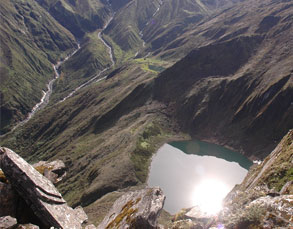 Day 9 Exploration Day/viewpoint
Day 9 Exploration Day/viewpoint
A climb to the ridge to the northeast, Dobra Danda, is rewarded with a supreme viewpoint of towering Ganesh Himal. The mesmerizing sight is unforgettable. Two small lakes shimmer below at the foot of the Himalaya. Kalo Kunda (black lake) has waters that mirror the awe-inspiring surroundings and the smaller Seto Kunda (white lake) has a seasonal pasture nearby. These lakes are said to have mystical powers that will bless visitors but anybody who misbehaves will be punished with poor weather and difficult travels.
Day 10 Return from Base Camp to Hindung (Gomba Danda) 2402m7900Ft. 7-8 hrs
Trek from Base camp to Hindung (Gomba Danda) will be almost the same way back you have done way up however its stunning mountain views, surrounding landscape of mother nature and jungle down hill walking makes you full of fun walking of the day.
Day 11 Hindung to hot springs to Racyat Gaon/Kapur Gaon 1500m/4950Ft. 5-6 hrs
Follow the Tatopani (Hot Spring) River south to a built up riverside hot springs with a bathing pool and 3 taps. Relax and rejuvenate the body, mind and spirit. The trail onward follows stone steps built by Kadoorie Agri Aid Association and British Gurkhas of Nepal. Both organizations are active in this area and responsible for building many water taps, bridges and improved trails. Pass through Tir on the way to welcoming Racyat and Kapur villages.
Day 12 Rachyat/Kapur Gaon to Lapa (lunch) to Khading Gaon 2025m/6660Ft. 4-5 hrs
Pass through Lapchyat gaon which is a charming Gurung village with nearly 30 homes. Cross the Lapa Khola on a box bridge and ascend along a trail surrounded by fields to the walled compound of a newly built hospital of the large town of Lapa gaon with over 400 homes.
Above Lapa gaon is Khading the largest Gurung village of the area. The residents have a welcoming spirit, and the people are enthusiastic to perform cultural dances with traditional music.
Day 13 Khading Gaon to Magne Goth 2950m/9735Ft. 4 hrs
Steeply up the hill to the west in a tall, blue pine forest with rambling rhododendron is Magne Goth, and nearby is a large boulder, location of ruby extraction.
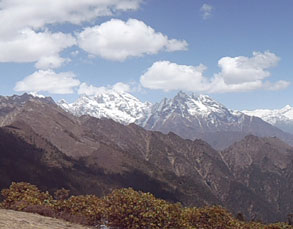 Day 14 Magne Goth – Lapu Danda 1250m/4125Ft. 5-6 hrs
Day 14 Magne Goth – Lapu Danda 1250m/4125Ft. 5-6 hrs
Enter Gorkha District on the descent to cross the Chote Khola before ascending through lush forest and descending into a valley with excellent panoramas including Manaslu, soaring in the western horizon.
Pass through the scenic villages of Dhonjet, Kartunje and Manbu and re-enter Dhading District to reach the magnificently located Laphu Danda, chiefly a Brahmin village with a large school in an area with luxuriant vegetation, surrounded by bountiful fields. Take in views of snow-clad Himalchuli and Shringi peaks with a section of the Ganesh Range.
Day 15 Lapu Danda – Ganga Jamuna 950m/3135Ft. 5-6 hrs
The path climbs through fertile fields of Baseri as it ascends to Dandagaon, with excellent views of Manaslu and more. Continue gradually to the glorious twin waterfalls of Ganga Jamuna.
Day 16 Ganga Jamuna - Tripura Sundari 850m/2805Ft. 5-6 hrs
This day will be quite easy walking day passing most of the Bhramin people's villages, paddy terraces and low land terrain views of the surroundings. Local culture, little bit of Mt. Manaslu ranges mountain vies as well as Akhu khola river views will lure the trekkers.
Day 17 Tripura Sundari - to Kathmandu 1310m/4323Ft. 6-7 hrs drive
The Ganesh Himal region and surrounding territory offers cultural and natural splendor and has religious significance, too, for pilgrims attracted to its sacred mountains and lakes. The area is filled with rare and exotic wildlife, wildflowers, herbal plants, yarsagumba, waterfalls, hills and peaks and hospitable, openhearted local people.
While magnificent scenery graces every step, the residents of the beautiful landscape welcome visitors to their extraordinary land. The region has something to bring travelers to Nepal and bring them back to Nepal on a repeat visit.
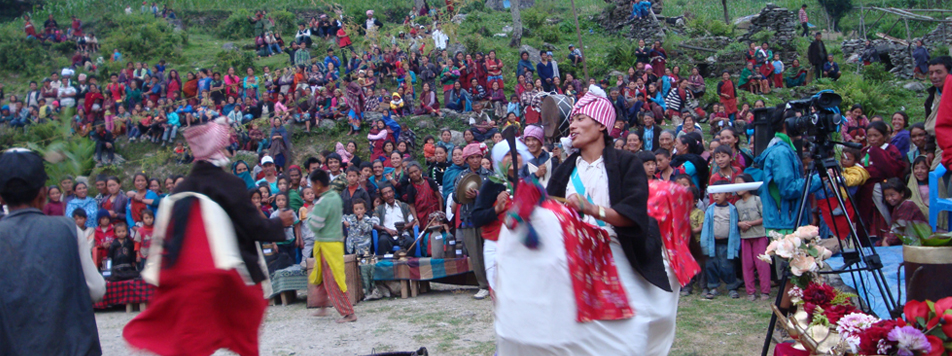 Tamang Mane Dance
Tamang Mane Dance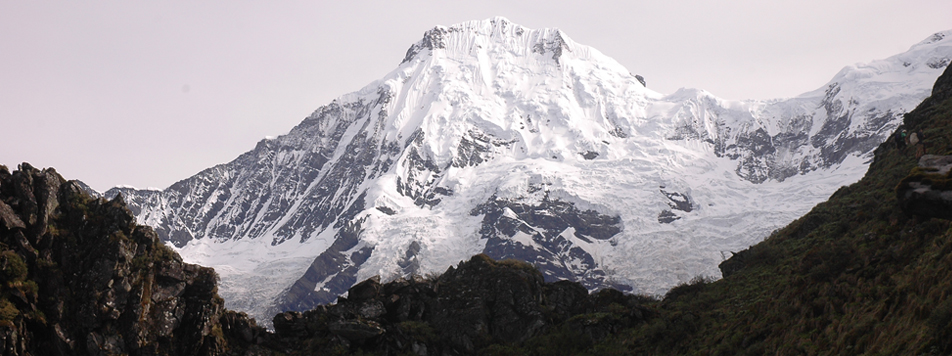 Ganesh Himal (7422m.)
Ganesh Himal (7422m.)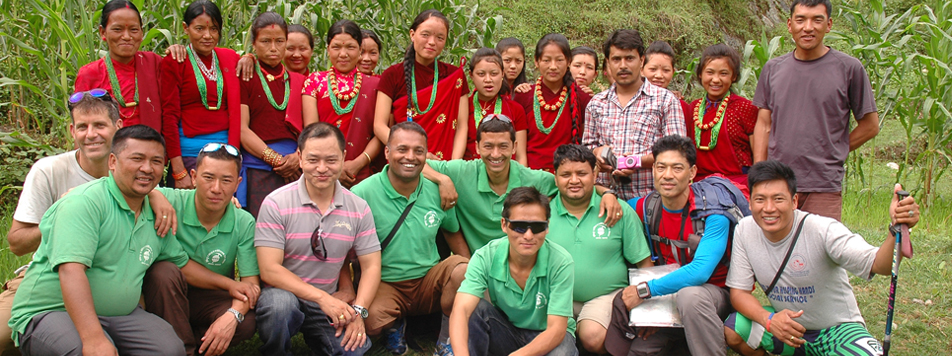 Explore Team with Gurung Women
Explore Team with Gurung Women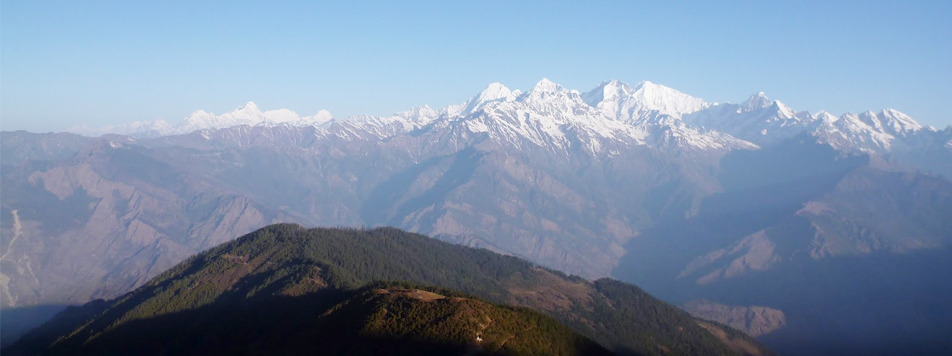 Ganesh Himal Treks (View from Sing La Pass 4050m.)
Ganesh Himal Treks (View from Sing La Pass 4050m.)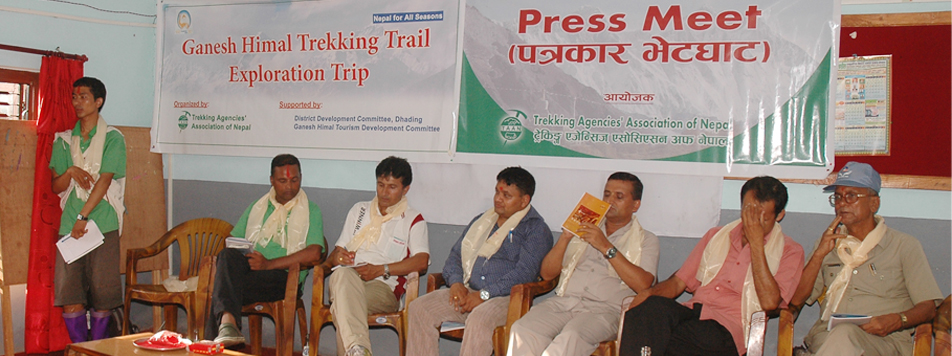 Explore Team for Press Meet
Explore Team for Press Meet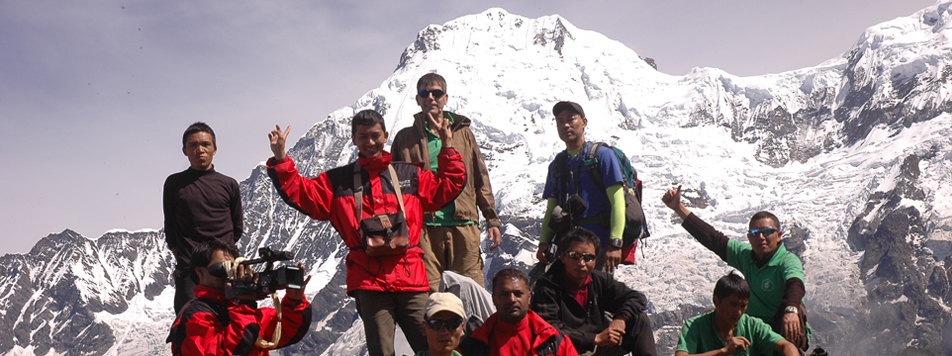 Ruby Valley Ganesh Himal Trekking (Kalo and Seto Kunda View Point)
Ruby Valley Ganesh Himal Trekking (Kalo and Seto Kunda View Point)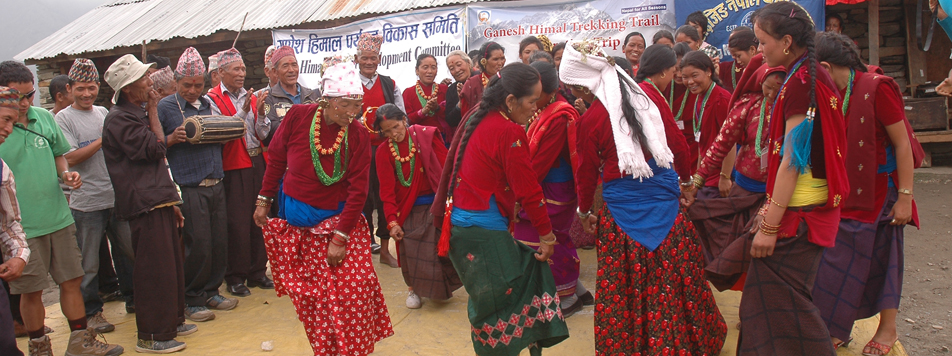 Gurung Ghatu Dance
Gurung Ghatu Dance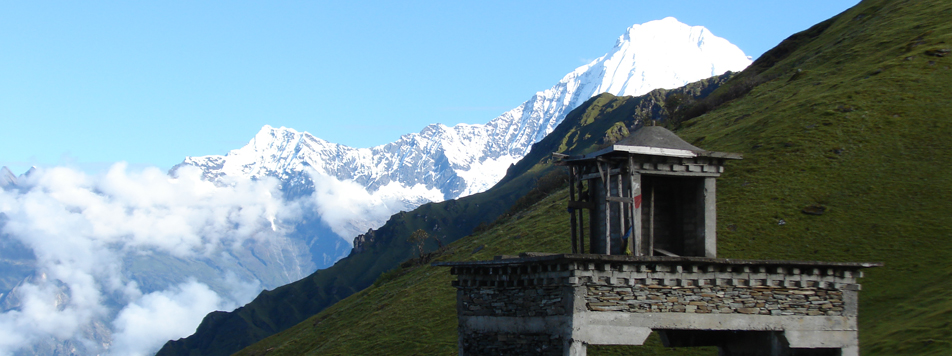 Pangsang Pass (3850m)
Pangsang Pass (3850m)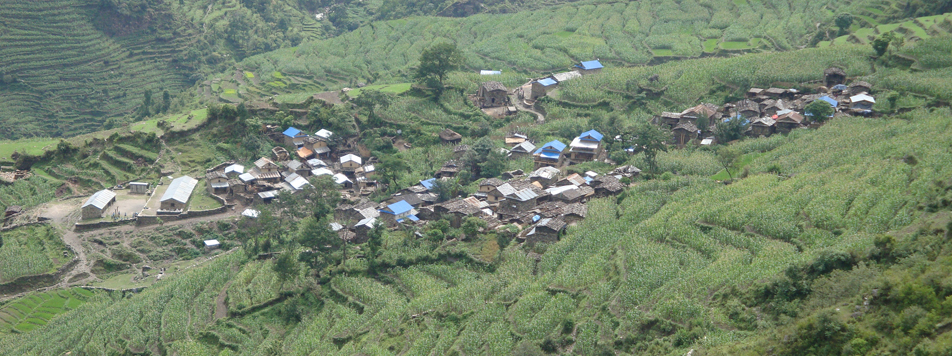 Ganesh Himal Chalis Gaon
Ganesh Himal Chalis Gaon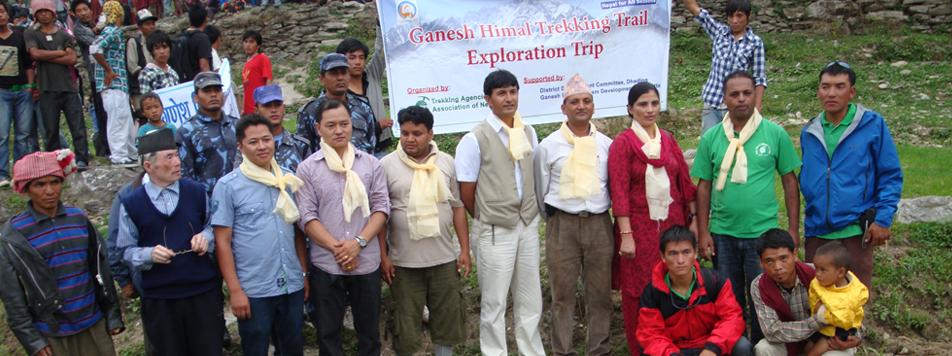 Group Photo with CDO and LDO
Group Photo with CDO and LDO Tamang Mane Dance
Tamang Mane Dance Ganesh Himal (7422m.)
Ganesh Himal (7422m.) Day 3 Gatlang to Parvati Kunda ,Yuri Kharka (lunch) to Somdang
Day 3 Gatlang to Parvati Kunda ,Yuri Kharka (lunch) to Somdang  Day 9 Exploration Day/viewpoint
Day 9 Exploration Day/viewpoint Day 14 Magne Goth – Lapu Danda
Day 14 Magne Goth – Lapu Danda 